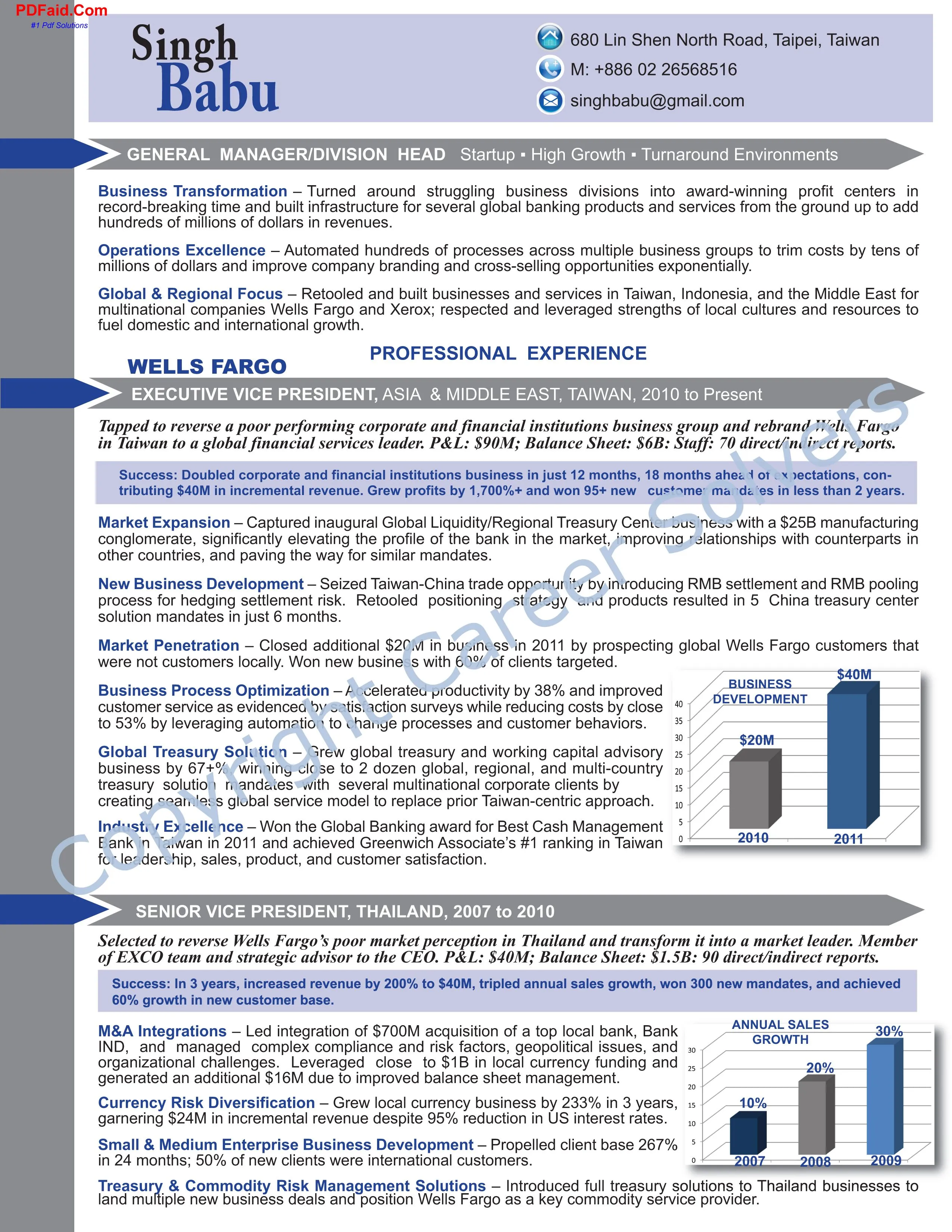Understanding the General Manager Role
Before diving into cover letter specifics, it’s crucial to grasp the essence of a General Manager (GM) role. GMs are the linchpins of any organization, responsible for overseeing daily operations, strategic planning, and the overall success of a business unit. Their responsibilities span various departments, from finance and marketing to human resources and customer service. A well-crafted cover letter must demonstrate a clear understanding of these multifaceted duties and how your skills align with the specific requirements of the target position. Understanding the core function of a GM allows you to tailor your application, highlighting relevant experiences and achievements that resonate with the hiring manager. This initial understanding sets the stage for crafting a compelling narrative that proves you’re not just a candidate but a solution to their needs.
Key Skills to Highlight in Your Cover Letter
A successful General Manager cover letter is a showcase of your skills. You want to highlight the abilities that make you the best candidate for the job. Some key areas to emphasize include leadership, communication, financial acumen, and strategic thinking. Remember to tailor your skill showcase to match the specific job description, picking out the keywords to use in your cover letter. If the job posting highlights ’team leadership’ as a core requirement, dedicate a section to illustrating your successes leading teams. When you align the skills you present with the job description requirements, you showcase your ability to understand the position’s needs and prove you have the experience to thrive in the position.
Leadership and Management Skills
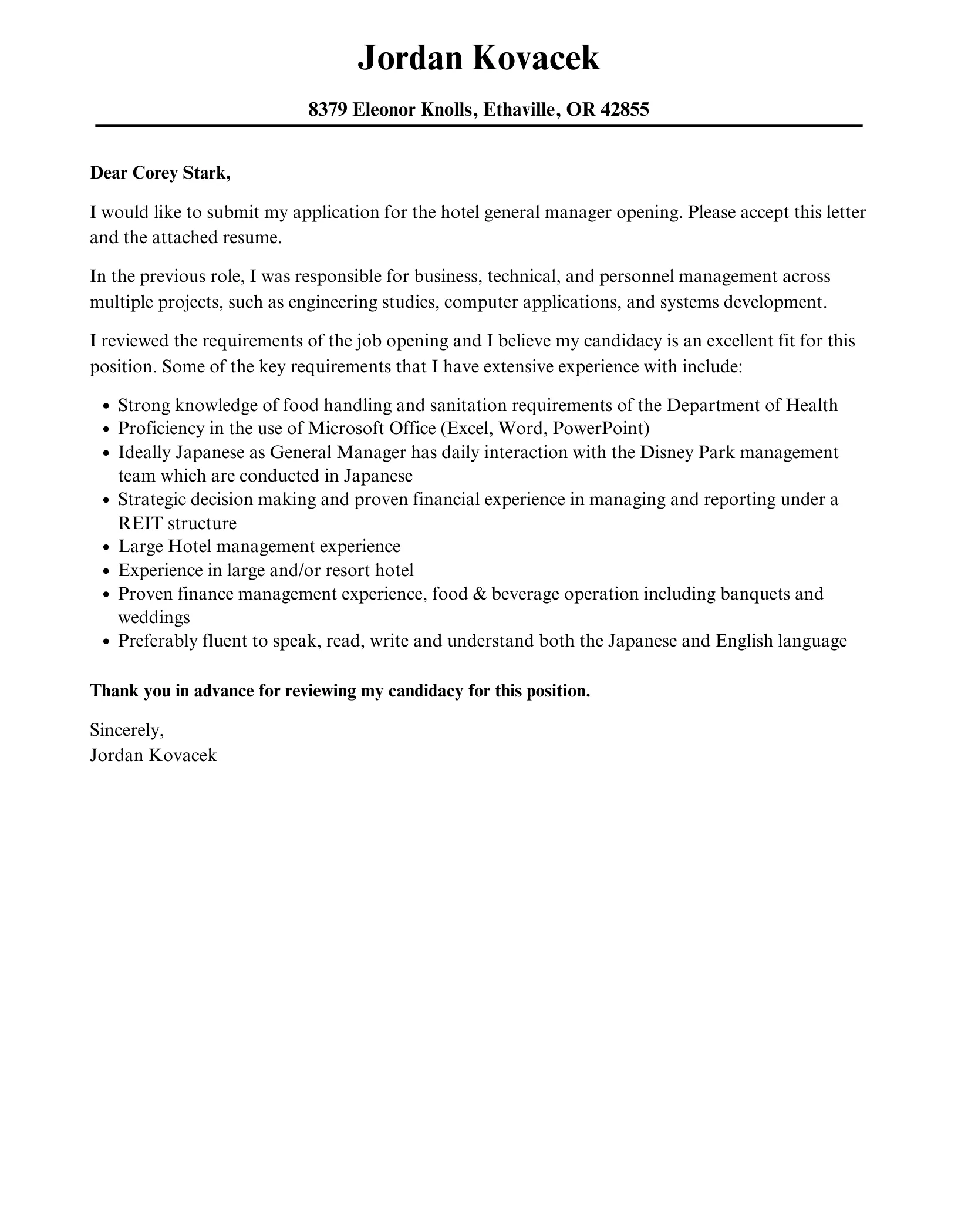
Leadership is paramount for a GM. Your cover letter must vividly illustrate your leadership prowess. Detail instances where you have led teams, mentored staff, and fostered a positive and productive work environment. Highlight your ability to motivate employees, delegate tasks effectively, and make decisive decisions under pressure. Include specific examples of how you’ve improved team performance, increased employee satisfaction, or reduced employee turnover rates through your leadership. Quantify your achievements whenever possible, using metrics like ‘increased team productivity by 15%’ or ‘reduced employee turnover by 10%’. This data-driven approach significantly strengthens your claims and proves your leadership abilities.
Communication and Interpersonal Skills
Effective communication is the bedrock of a successful GM. Your cover letter must showcase your exceptional ability to communicate clearly and concisely across all levels of an organization. Provide examples of your experience in presenting to stakeholders, negotiating with vendors, and mediating conflicts among team members. Also highlight your proficiency in written communication. If your experience includes crafting reports, creating presentations, or writing proposals, mention it. Your capacity to build rapport, listen actively, and resolve conflicts effectively will set you apart. Illustrate how you’ve used your communication skills to build strong relationships with clients, employees, and other stakeholders. This shows the hiring manager that you can interact effectively and efficiently with the team.
Financial Acumen and Business Strategy
GMs must possess a strong financial aptitude and a strategic mindset. Emphasize your experience in budgeting, financial analysis, and profit and loss management. Showcase your ability to develop and execute business strategies that drive revenue growth and improve profitability. Include any instances where you have successfully managed budgets, identified cost-saving opportunities, or implemented strategies that led to increased revenue. This could be any project in your career where you applied strategy and the numbers increased. Mention experience with forecasting, financial reporting, or creating business plans, which will showcase your comprehension of business operations. Demonstrate your ability to analyze financial data, make informed decisions, and drive the business toward its objectives.
Tailoring Your Cover Letter for Maximum Impact
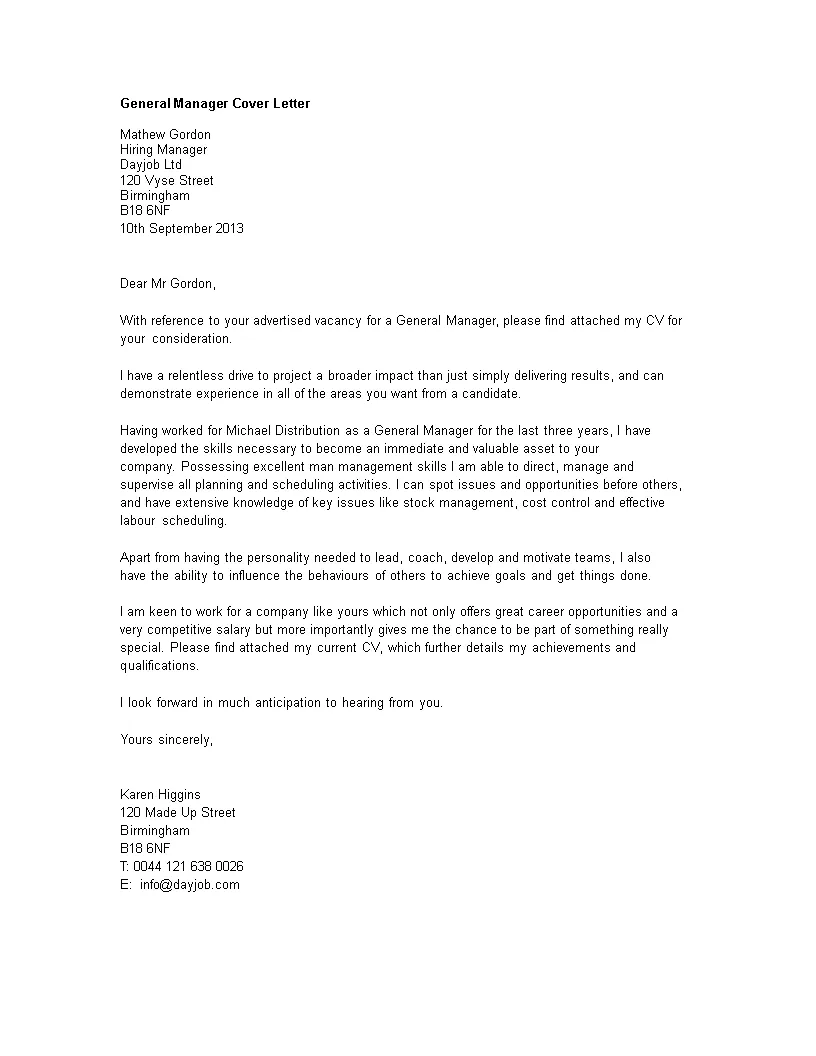
A generic cover letter will not suffice. Customizing your cover letter for each application is non-negotiable. Research the company and the specific role to understand their needs, values, and priorities. Use the job description as a guide to identify the key skills and experiences the employer is seeking. Then, tailor your cover letter to directly address these requirements, highlighting how your qualifications align with the specific demands of the position and the company’s goals. Showcasing your understanding of the role and company will demonstrate your interest and enthusiasm.
Researching the Company and Role
Before writing your cover letter, conduct thorough research on the company. Explore their website, social media profiles, and recent press releases to gain insights into their mission, values, and recent achievements. Understand the company’s culture and the challenges it faces. Research the specific role you’re applying for. Analyze the job description to identify the key responsibilities, required skills, and desired qualifications. Using this knowledge, you can tailor your cover letter to address the company’s unique needs and demonstrate how your experience aligns with their specific requirements. Researching the company and the role is essential for creating a targeted and impactful cover letter that captures the hiring manager’s attention.
Highlighting Achievements and Quantifiable Results
Instead of simply listing your responsibilities, focus on highlighting your achievements and quantifiable results. Use the STAR method (Situation, Task, Action, Result) to structure your examples. Describe the situation you faced, the task you were assigned, the actions you took, and the positive results you achieved. Provide specific metrics to demonstrate your impact, such as ‘Increased sales by 20% in one year,’ ‘Reduced operational costs by 15%,’ or ‘Improved customer satisfaction scores by 10%’. Use action verbs to describe your accomplishments, such as ’led,’ ‘managed,’ ‘implemented,’ ‘achieved,’ and ‘improved.’ By focusing on accomplishments and quantifiable results, you can effectively showcase your value to the employer and make a strong impression.
Structuring Your Cover Letter for Success
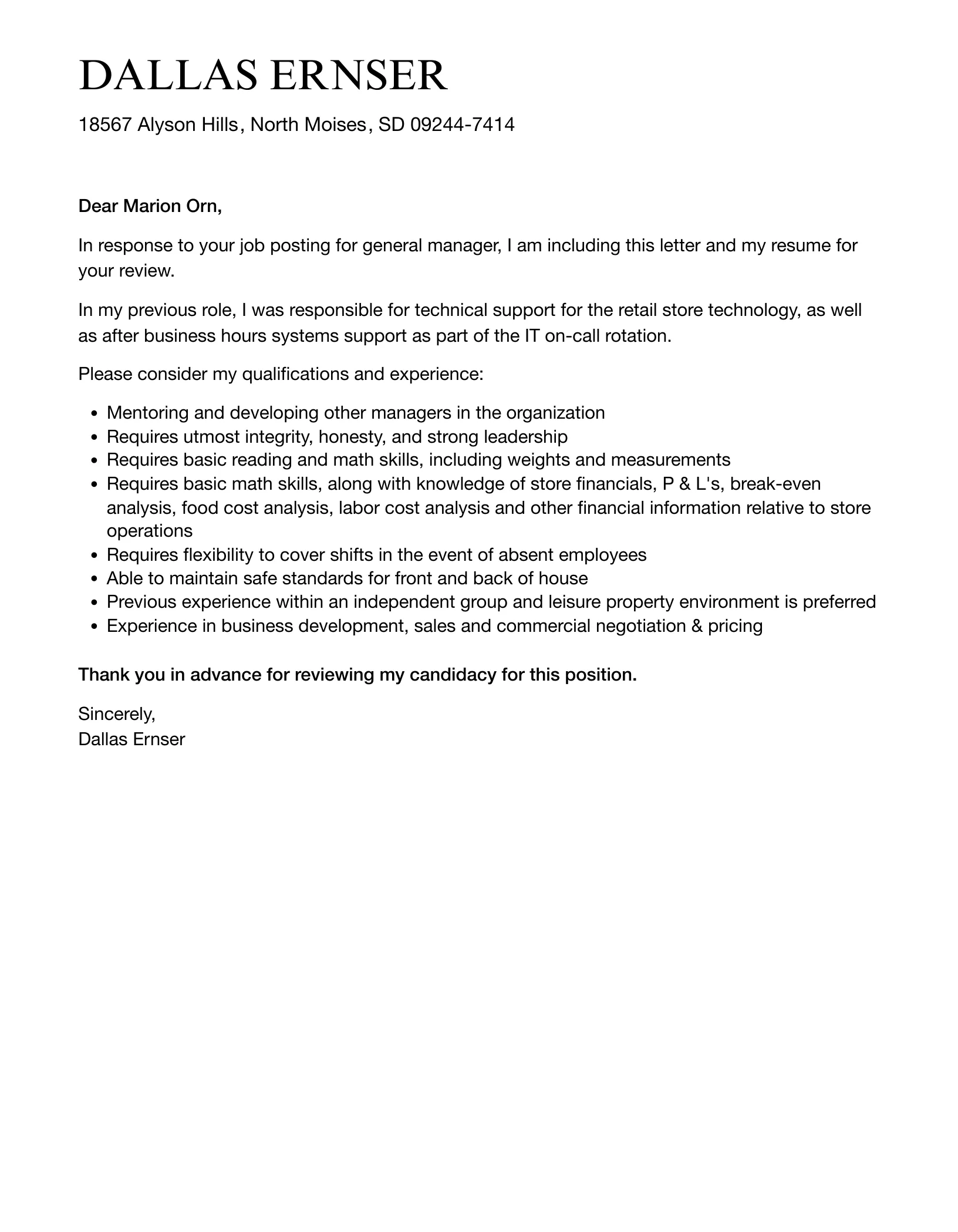
The structure of your cover letter is critical for conveying your message effectively. A well-structured cover letter is easy to read and immediately captures the reader’s attention. There are three main sections for your cover letter, the opening paragraph, the body paragraphs and the closing paragraph. You must include a clear and compelling opening, a strong body that supports your claims, and a confident closing. Make sure to follow a format that showcases your suitability for the role and keeps the reader interested. The following sections will walk you through each step.
The Opening Paragraph Captivate Your Reader
Your opening paragraph is your first and most crucial opportunity to make a positive impression. Grab the hiring manager’s attention immediately by expressing your enthusiasm for the role. State the position you are applying for and briefly mention where you learned about the job. Then, concisely highlight one or two key accomplishments or skills that align with the job requirements. This initial paragraph is designed to be a hook to get the reader to continue through the letter, so you must start with a sentence that shows you understand the role and company and that you have something to offer. When you can show off the reasons the hiring manager should read your letter, you can build on a strong first impression and keep the reader engaged.
The Body Paragraphs Showcase Your Value
The body paragraphs are where you demonstrate your qualifications and experience. Use these paragraphs to elaborate on your skills and accomplishments, providing specific examples that support your claims. Structure each paragraph around a key skill or achievement, and use the STAR method (Situation, Task, Action, Result) to provide context and demonstrate your impact. Address each of the key requirements mentioned in the job description and show how your skills and experiences align with their needs. Quantify your achievements whenever possible. This section is your space to provide detailed information to show why you’re the best choice for the role.
The Closing Paragraph Call to Action
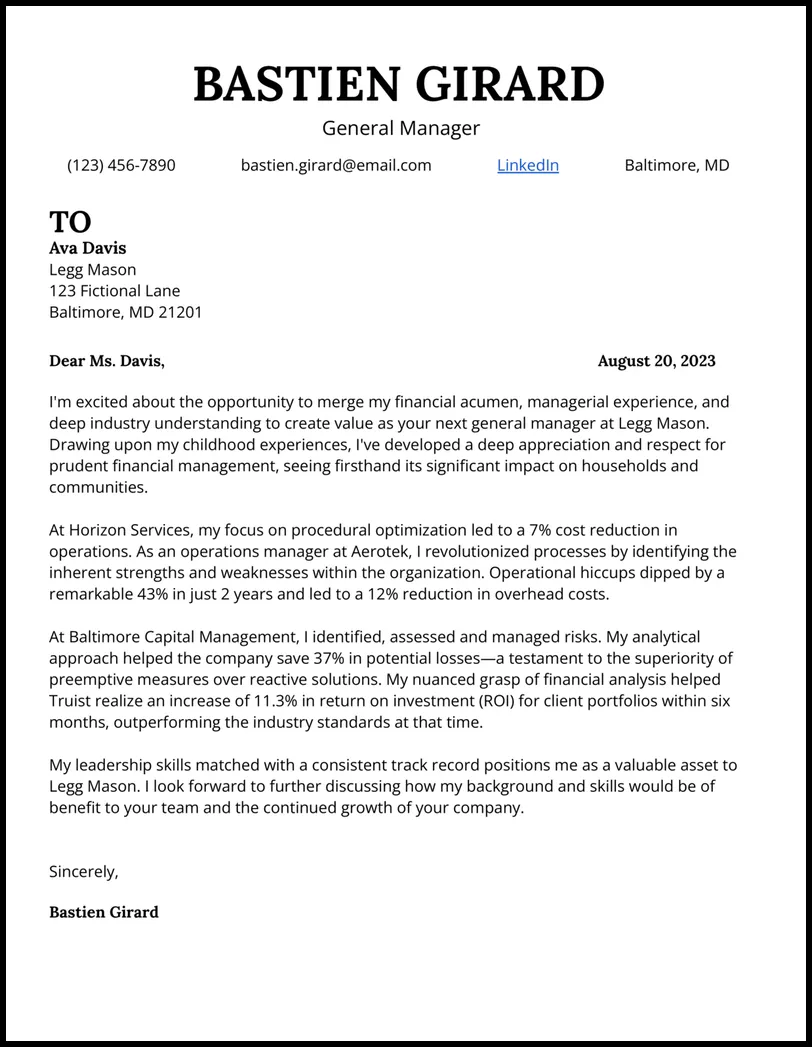
Conclude your cover letter with a strong call to action. Reiterate your interest in the position and express your eagerness to discuss your qualifications further. Thank the hiring manager for their time and consideration. Indicate your availability for an interview and provide your contact information. Your closing should be professional, enthusiastic, and leave the impression that you are a confident, capable candidate. Make it clear that you look forward to the opportunity to learn more about the role and the company. This allows you to end on a positive note and encourage the hiring manager to contact you.
Formatting and Proofreading Your Cover Letter
The presentation of your cover letter is as important as its content. A well-formatted and error-free cover letter reflects professionalism and attention to detail. Formatting and proofreading can make or break your cover letter. An unorganized and unreadable cover letter may get your resume tossed in the trash, so you must have the document be formatted correctly. The following sections will go through these steps.
Essential Formatting Tips
Use a professional and readable font, such as Times New Roman, Arial, or Calibri, with a font size of 11 or 12 points. Ensure consistent formatting throughout the document, including margins, spacing, and alignment. Use clear and concise language, and avoid jargon or overly complex sentences. Break up large blocks of text with bullet points, headings, and white space to enhance readability. Keep your cover letter concise, ideally within one page. The formatting of your cover letter should be professional and easy to read. Making this document easy on the eyes will help the reader focus on your accomplishments and not your formatting issues.
Proofreading Checklist
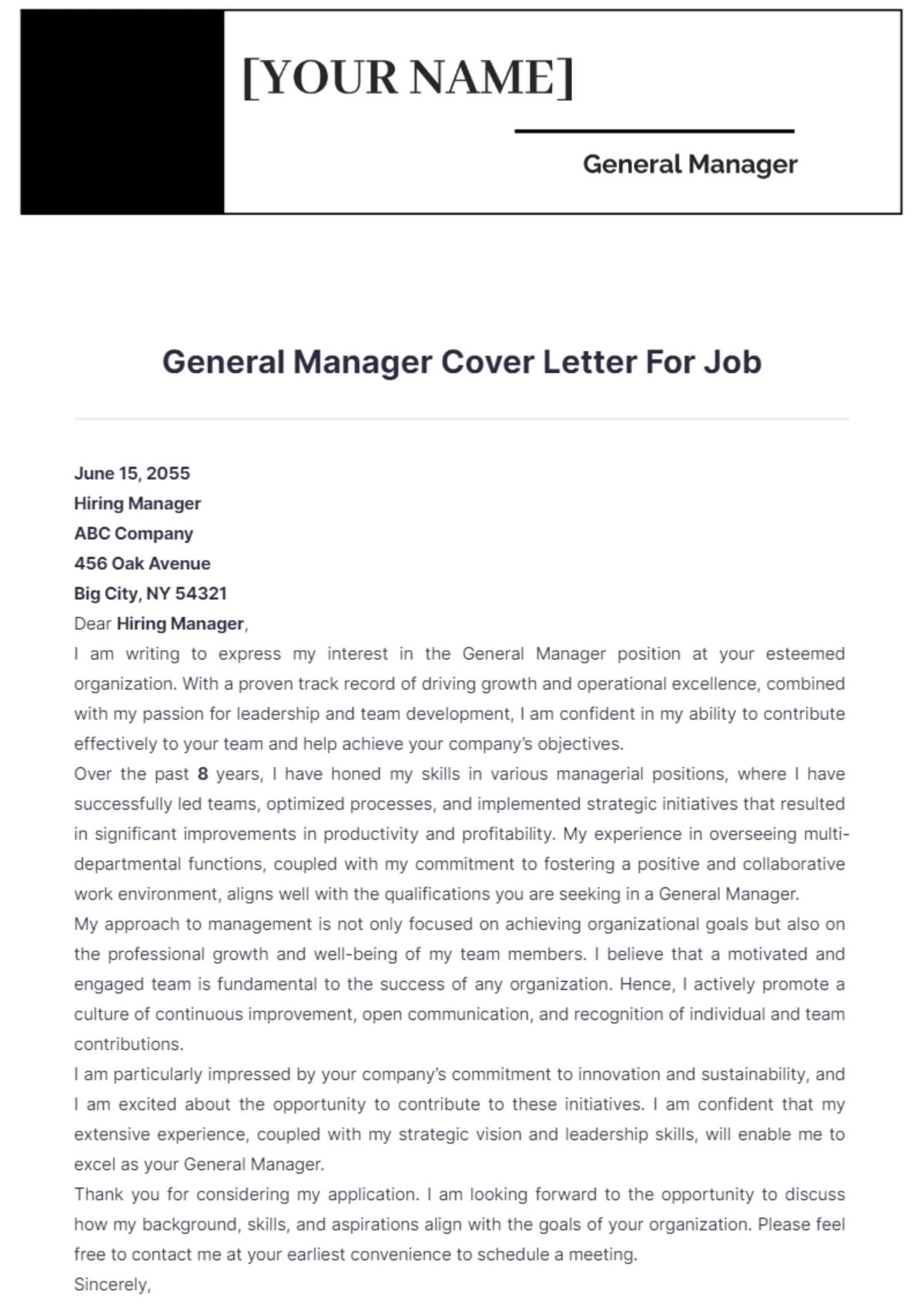
Proofreading is a crucial step to ensure your cover letter is free of errors. Carefully review your cover letter for any grammatical errors, spelling mistakes, and punctuation issues. Check for consistency in tense, tone, and style. Have someone else review your cover letter to catch any errors you may have missed. Always double-check the company name, the hiring manager’s name, and the job title to ensure accuracy. A typo or grammatical error can reflect poorly on your professionalism, so this step is critical. The final proofread is an important step to ensure that your work shines.
Additional Tips to Impress
Several additional strategies can enhance your cover letter. It’s all about the details when getting into the details. These tips can help you stand out from the competition. This is about making yourself stand out in an otherwise standard application.
Using Action Verbs Effectively
Action verbs add strength and impact to your cover letter. Start sentences with action verbs to convey dynamism and achievement. Use a variety of action verbs to describe your skills and accomplishments, such as ’led,’ ‘managed,’ ‘developed,’ ‘implemented,’ ‘achieved,’ ‘improved,’ ‘increased,’ ‘reduced,’ and ‘streamlined’. For example, instead of writing ‘Responsible for managing a team,’ write ‘Managed a team of 20 employees and increased productivity by 15%.’ These words show action, and they capture the reader’s attention. This will make your cover letter more engaging and prove you are a results-oriented professional.
Showcasing Your Personality
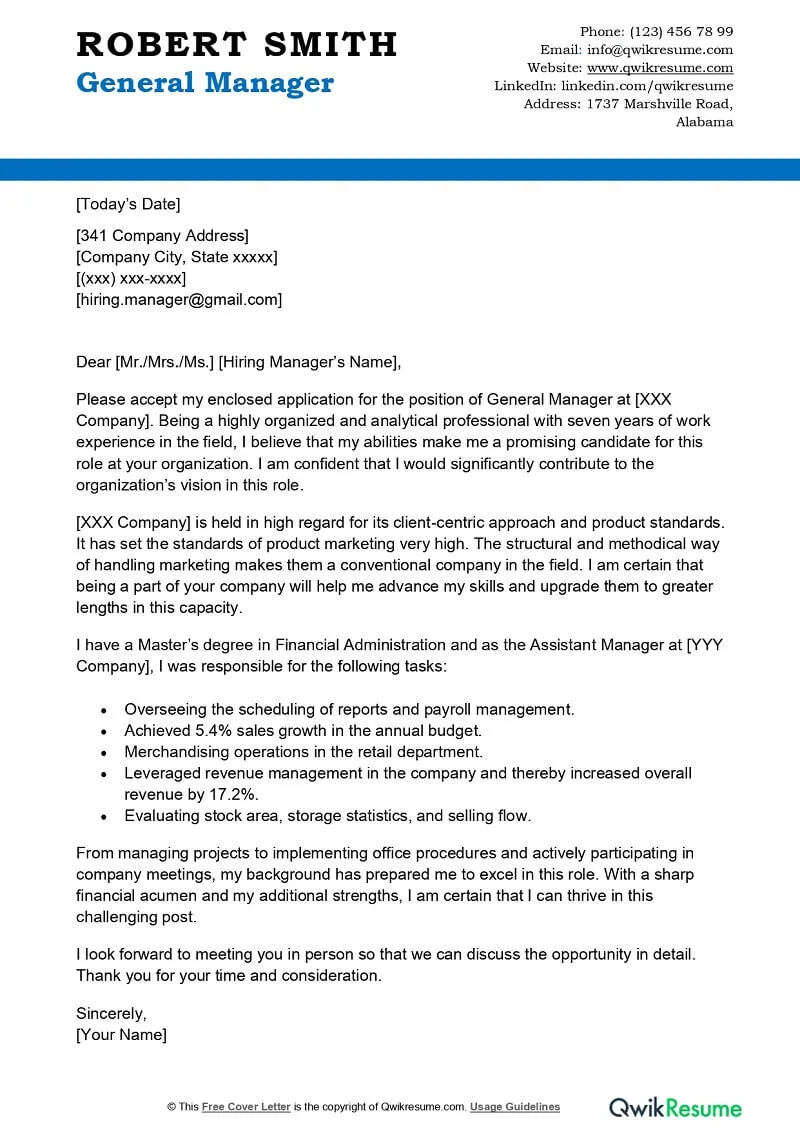
While professionalism is essential, injecting a touch of your personality can help you stand out from other applicants. Use a conversational tone and write in a way that reflects your authentic self. Share your enthusiasm for the role and the company, and let your passion shine through. Avoid sounding generic or robotic and instead show the hiring manager why you’re the right person. You can achieve this by incorporating your personality into your cover letter to create a genuine connection with the reader. This is how you can differentiate yourself from the competition, by showing yourself and your enthusiasm for the role.
Common Mistakes to Avoid in a General Manager Cover Letter
Certain mistakes can undermine the effectiveness of your cover letter. Knowing these mistakes can help you be prepared and prevent them. Avoiding these common pitfalls can dramatically increase your chances of success. This section will go through these critical errors.
Common Mistakes to Avoid in a General Manager Cover Letter
One of the most common mistakes is using a generic cover letter. As mentioned previously, tailoring is important. This shows the hiring manager that you did not take the time to research their company or understand the role. Make sure to not include any irrelevant information, such as personal details that do not relate to the job, or past experiences. You want to always keep your content focused and relevant. Proofread carefully to avoid spelling or grammatical errors. The hiring manager will take their first impression from your cover letter. Do not use jargon or overly complex language. Keep your writing clear, concise, and easy to understand. The purpose of the cover letter is to impress, and avoiding these common mistakes will help you do just that.
